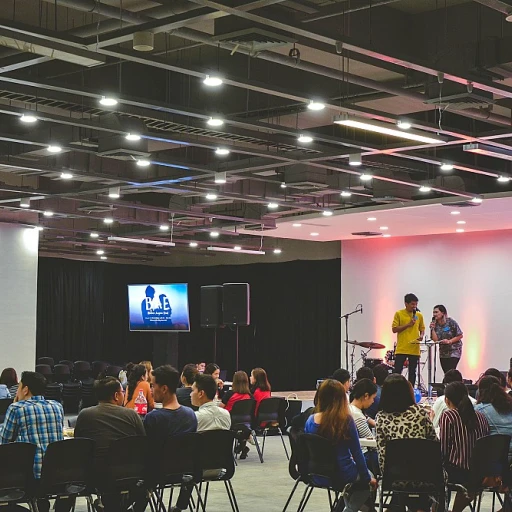
Understanding the Importance of Employee Recognition
The Significance of Employee Recognition in Today's Workplace
In the modern work environment, the importance of employee recognition cannot be overstated. As organizations strive to foster a positive and engaging atmosphere, recognizing employees for their hard work and achievements has become a cornerstone of successful employee appreciation strategies. This not only boosts morale but also enhances employee engagement and retention.
Recognition programs are essential in making employees feel valued and appreciated. When team members are acknowledged for their contributions, it creates a ripple effect of positivity throughout the organization. Employees who feel recognized are more likely to be motivated, productive, and committed to their roles.
Moreover, the benefits of recognition extend beyond individual satisfaction. A well-implemented recognition program can improve team dynamics, foster a culture of appreciation, and even enhance the overall employee experience. By integrating recognition into the company culture, organizations can create an environment where employees feel empowered and valued.
As we explore creative recognition ideas and the role of technology in recognizing employees, it's crucial to understand that personalized recognition can significantly boost engagement. Tailoring recognition to individual preferences and achievements ensures that employees feel genuinely appreciated, leading to a more committed and enthusiastic workforce.
Creative Recognition Ideas for Modern Workplaces
Unique Approaches for Modern Work Environments
In today's dynamic work environments, it's crucial for companies to explore innovative recognition ideas that cater to the diverse preferences of employees. Traditional awards are making way for more imaginative alternatives that resonate personally and foster a sense of appreciation.- Peer Recognition Programs: Encouraging team members to recognize each other's achievements not only creates a positive work environment but also builds stronger team dynamics. Peer recognition can be facilitated through simple online platforms where positive feedback and encouragement can be shared among colleagues.
- Social Media Shoutouts: Amping up the visibility of recognition by sharing employees' achievements on the company’s social media channels can be a powerful gesture of appreciation. This not only boosts morale but also enhances the employee's professional profile.
- Personalized Appreciation Notes: While electronic communications dominate, a personal touch like a handwritten note can speak volumes. Acknowledging employees' hard work with a genuine message of thanks shows attention to detail and care.
- Professional Development Opportunities: Instead of conventional rewards, offering development opportunities can align personal aspirations with company goals. Providing access to courses, workshops, or seminars shows commitment to employees' professional growth, leading to greater engagement.
- Time Off as a Reward: Recognizing hard work with additional time to recharge can significantly enhance an employee’s experience. This approach can be particularly effective for top performers, serving both as an appreciation and a tangible benefit.
- Experiential Rewards: Instead of traditional gifts, experiential rewards such as team-building activities, concerts, or even wellness retreats can be memorable ways to recognize achievements. These shared experiences not only reward employees but also foster team collaboration and cohesion.
Leveraging Technology for Employee Recognition
Embracing Technology for Enhanced Employee Recognition
In today's digital age, leveraging technology has become an integral component of modern employee recognition programs. Utilizing various tools and platforms, organizations can ensure real-time acknowledgment of achievements, enhancing the overall employee experience. One innovative approach involves using social media to showcase accomplishments and highlight individual or team successes. Public recognition not only boosts employee morale but also strengthens the employer brand by showcasing a positive work environment. Companies are increasingly adopting digital platforms to streamline their recognition efforts. These platforms offer a seamless way to track, manage, and recognize employees' hard work, providing meaningful rewards like gift cards and professional development opportunities. By digitizing these processes, companies can make recognition more consistent and inclusive, especially for remote employees. Moreover, technology facilitates personalized recognition. Automated systems can track employees' milestones and prompt personalized appreciation ideas that resonate with individual preferences. Such efforts can make employees feel truly valued, increasing their engagement and loyalty to the organization. Another aspect to consider is peer recognition, which can be enhanced through dedicated apps that allow team members to easily appreciate their colleagues' efforts. This not only fosters a positive work culture but also fills the gap traditional top-down recognition programs might leave. By embracing technology, organizations can effectively integrate recognition into their workplace culture, ensuring employees feel appreciated and connected, regardless of their physical location. This tech-driven approach ultimately contributes to a more motivated and productive workforce.Personalizing Recognition to Boost Engagement
Customizing Honors for Authentic Connection
To genuinely boost engagement among team members, it's vital to tailor recognition in a way that resonates on a personal level. When employees feel seen and valued as individuals, the impact of recognition is significantly heightened. This not only fosters a positive work environment but also elevates the overall employee experience. One approach to personalize appreciation is by learning about your employees' preferences in recognition. Do they value public acknowledgment or more private, subtle gestures? Perhaps a gift that caters to their hobbies, interests, or professional development goals would mean more than a generic token. Understanding these nuances ensures that appreciation feels sincere and genuine. Additionally, incorporating personalized rewards can enhance employee engagement. Offering choices like gift cards, professional development opportunities, or custom appreciation ideas, respects the unique needs and desires of each employee. For remote employees, virtual acknowledgments via social media shout-outs or personalized recognition emails can hold significant value. Peer recognition is another powerful tool in personalization. Encouraging team members to recognize each other's achievements cultivates a culture of mutual respect and appreciation. This not only strengthens team bonds but also creates an inclusive environment where all victories, big or small, are celebrated. By investing the time to understand what genuinely motivates and uplifts employees, organizations can create recognition programs that leave a lasting positive impact and drive continuous employee appreciation.Integrating Recognition into Company Culture
Embedding Recognition as a Cornerstone of Company Culture
Incorporating a robust employee recognition program into your company's culture is essential for nurturing a thriving work environment. Recognition should not be a mere occasional event but rather a fundamental aspect of daily operations. When employees feel appreciated consistently, they are more likely to stay motivated and engaged in their roles. Establishing recognition as a cultural norm rather than a special initiative can yield substantial benefits for the organization.
Start by cultivating an atmosphere where every team member can recognize and be recognized for their contributions. This encourages a positive cycle of appreciation and can transform the company's dynamic. For instance, peer recognition provides an opportunity for colleagues to celebrate each other's hard work and achievements. It also helps build strong bonds within teams, leading to improved collaboration and a sense of belonging.
Leadership should play an active role in reinforcing recognition within the culture. Leaders can lead by example by openly acknowledging the efforts and achievements of individuals and teams. Regularly weaving recognition moments into meetings and communications helps set a positive tone and aligns employees with company values. A culture of recognition is not only about public praise but also about personal, thoughtful gestures. This could be as simple as personalized appreciation notes or recognizing milestones with meaningful gift cards or rewards.
Moreover, integrating recognition within professional development pathways can significantly boost employee engagement. When employees see a direct correlation between their hard work, recognition, and their own personal growth, it further stimulates motivation. Providing development opportunities as part of recognition shows that the company values its employees' progress and encourages them to take ownership of their careers.
For remote employees, consider virtual recognition ideas that maintain the connection even from afar. Utilizing technology and social media platforms can help bridge the gap, ensuring remote team members feel equally appreciated for their efforts.
Emphasizing recognition within the company culture makes a lasting impact. It's about consistently recognizing the value that top performers and every team member bring to the table, fostering an environment where employees truly feel they are an integral and valued part of the organization.













